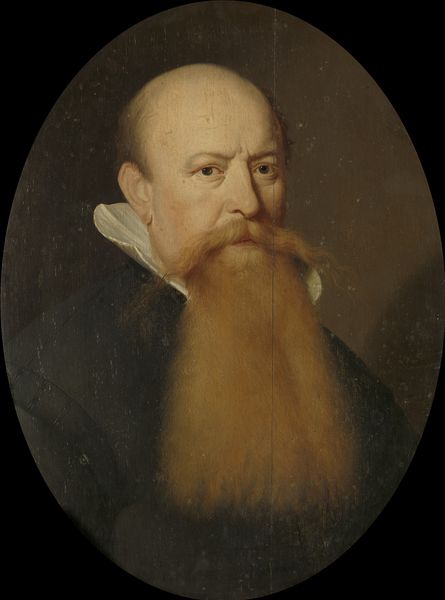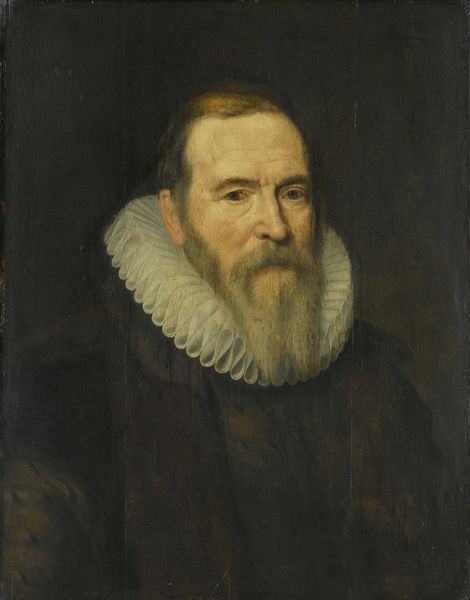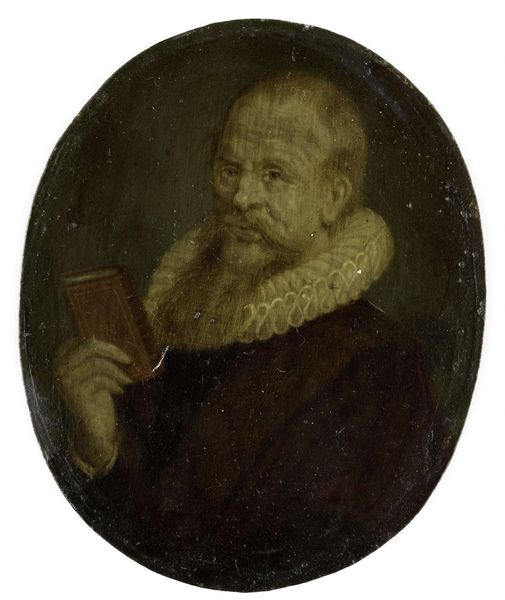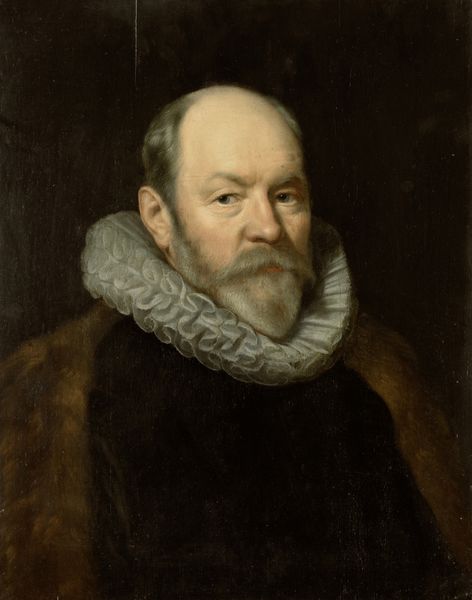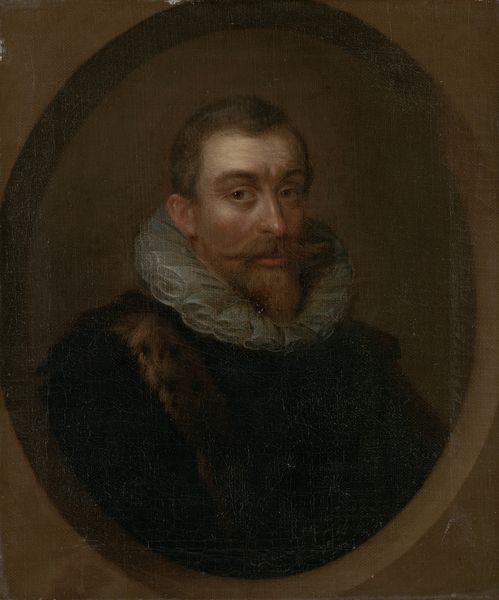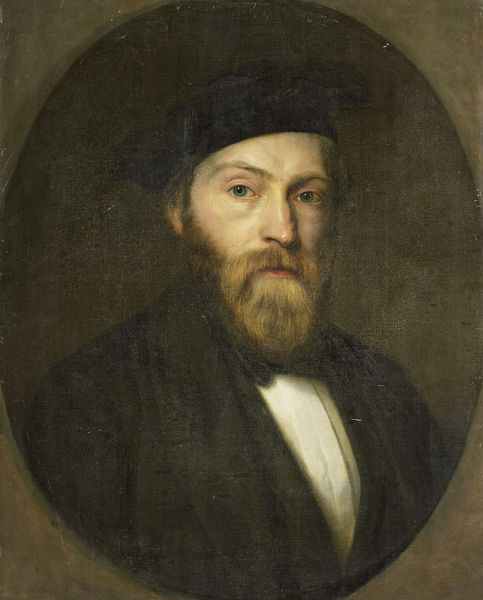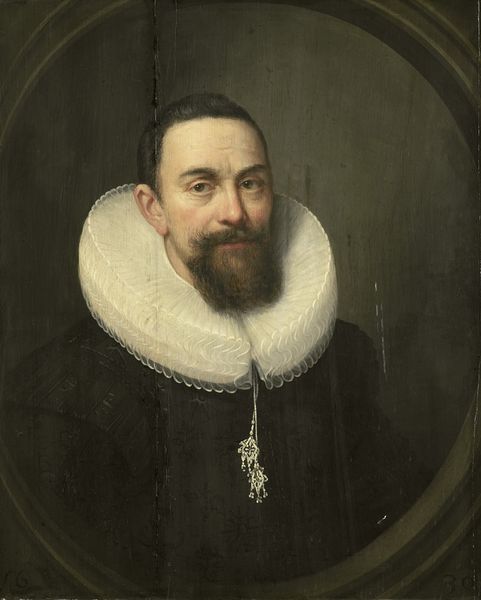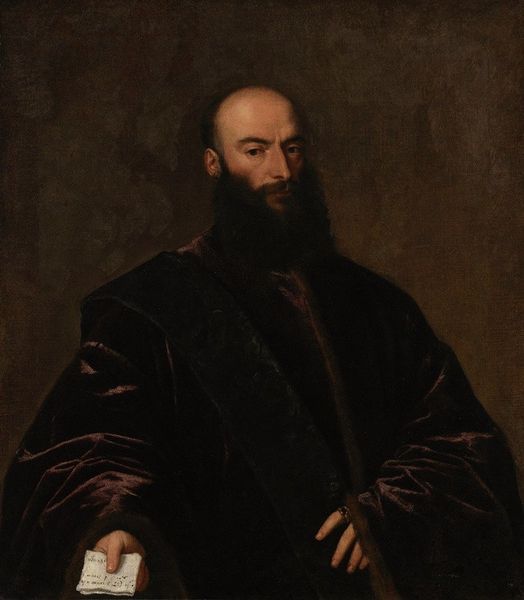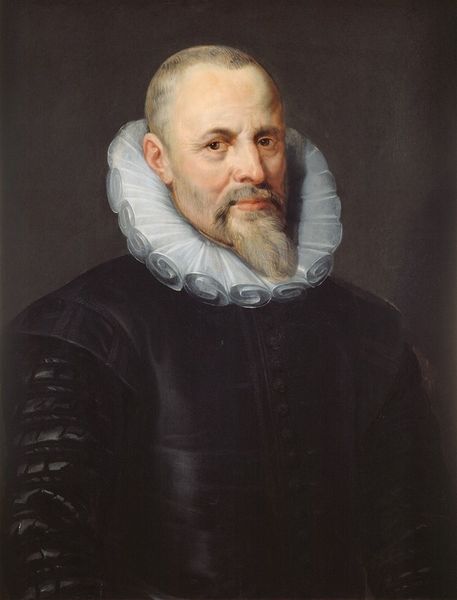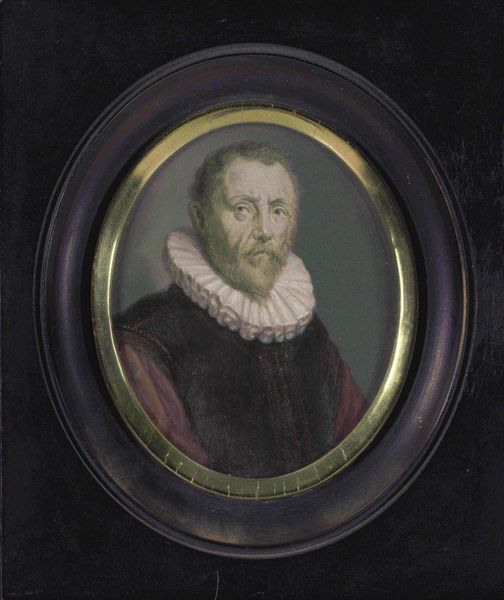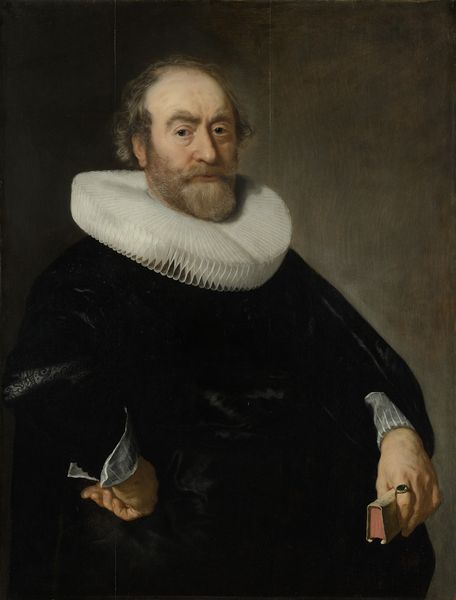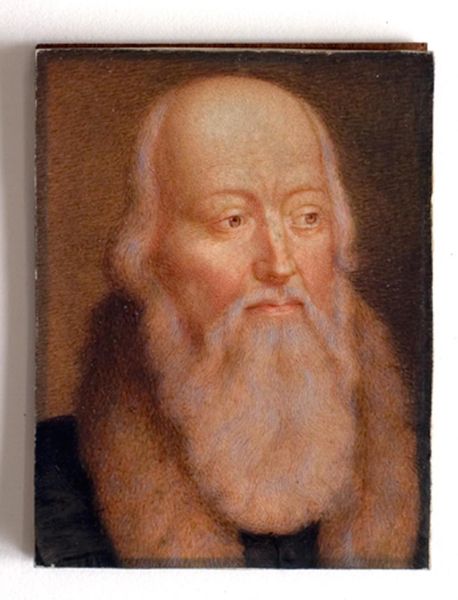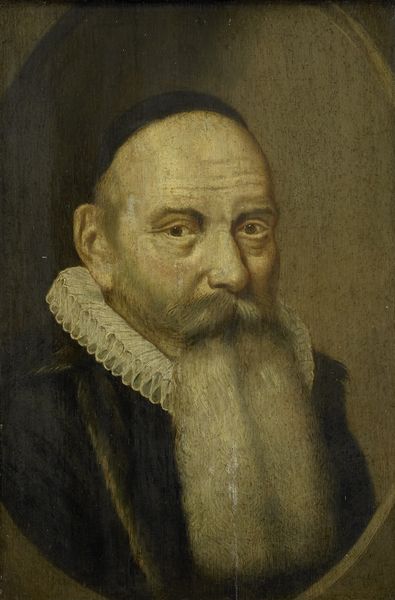
painting, oil-paint
#
portrait
#
character portrait
#
baroque
#
portrait image
#
portrait
#
painting
#
oil-paint
#
figuration
#
portrait reference
#
portrait head and shoulder
#
portrait drawing
#
facial portrait
#
fine art portrait
#
celebrity portrait
#
digital portrait
Dimensions: height 38 cm, width 31 cm, depth 4.4 cm
Copyright: Rijks Museum: Open Domain
Philip van Dijk painted this portrait of Cornelis van Ceters in the Netherlands, likely during the first half of the 18th century. While van Dijk enjoyed a successful career painting members of the Dutch elite, this work depicts a man who lived two centuries earlier. Why would van Dijk paint this particular historical figure? Cornelis van Ceters was a member of the Dutch Reformed Church and an outspoken opponent of religious tolerance. Van Ceters helped to prosecute several Anabaptists, some of whom were put to death for their beliefs. This portrait, painted long after van Ceters’ death, suggests that the memory of his conservative religious views remained relevant in the 18th century. The painting is a window into the cultural and religious tensions within Dutch society long after the events depicted. Art historians use resources such as letters, archives, and publications to more fully understand the context of artworks like this one. In so doing, we come to understand that art always exists in dialogue with the social and institutional forces of its time.
Comments
No comments
Be the first to comment and join the conversation on the ultimate creative platform.
